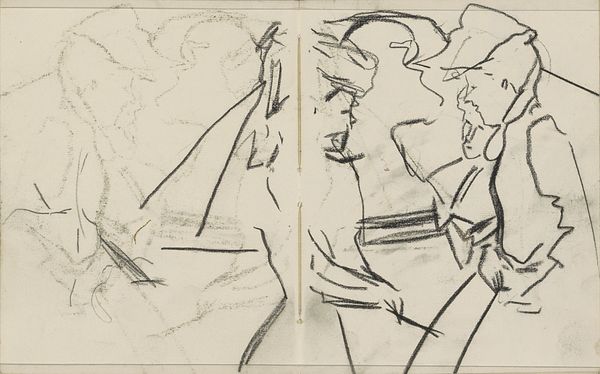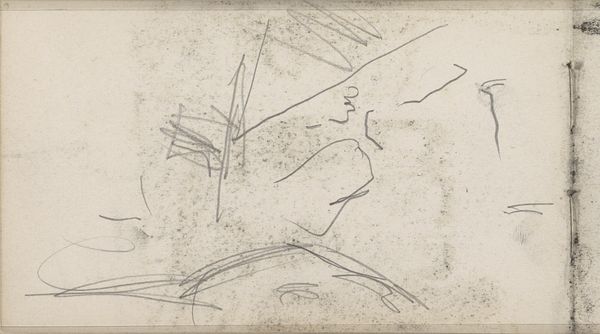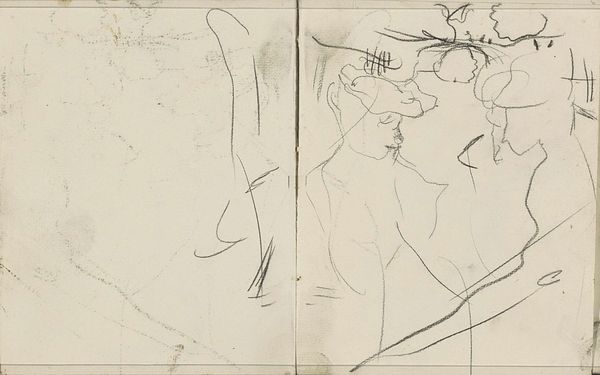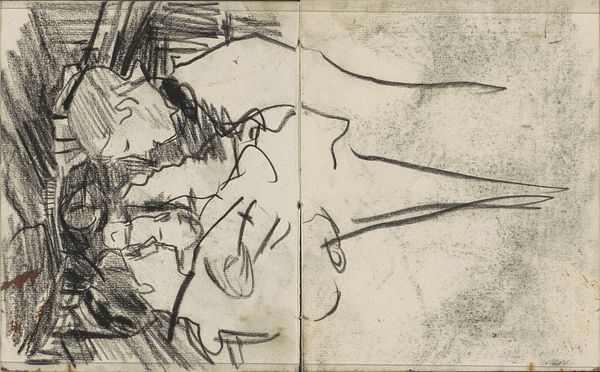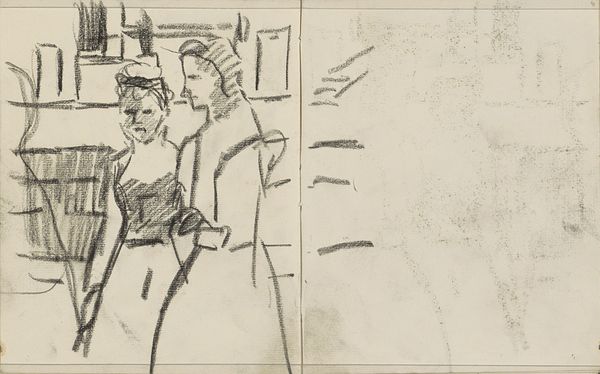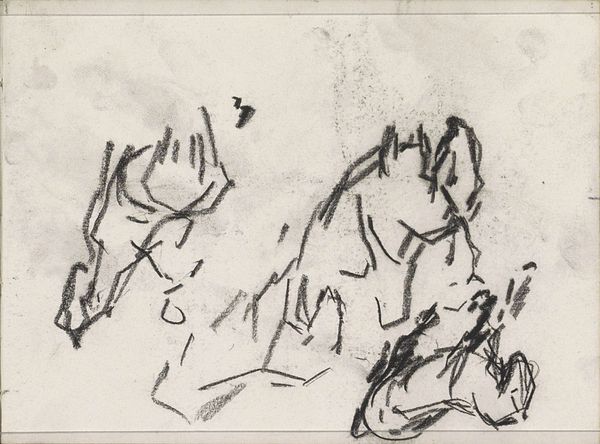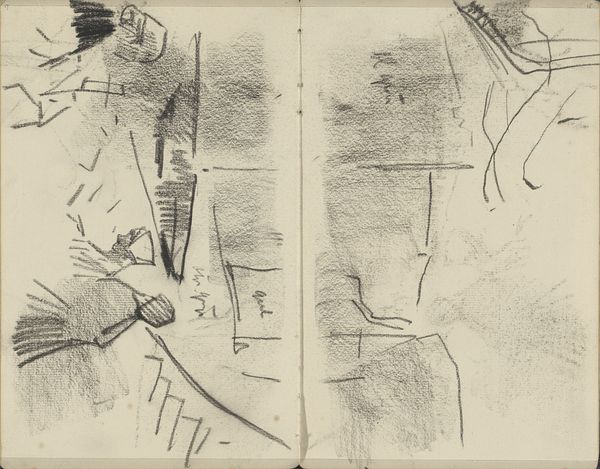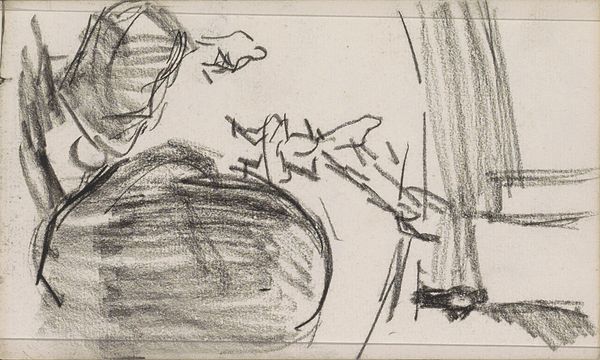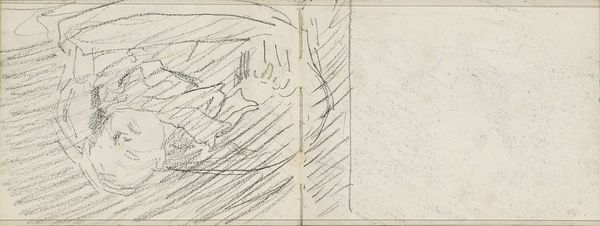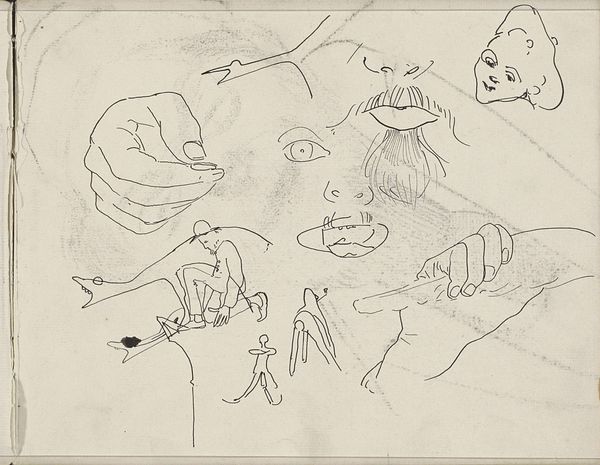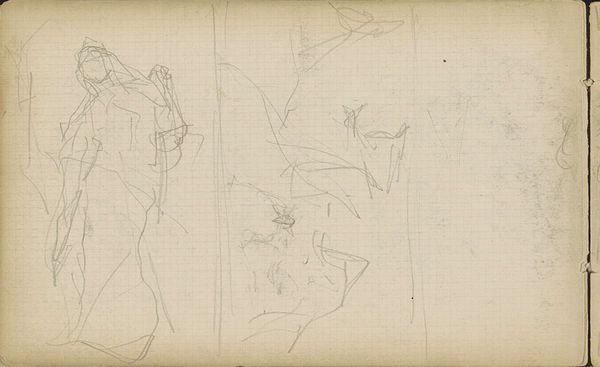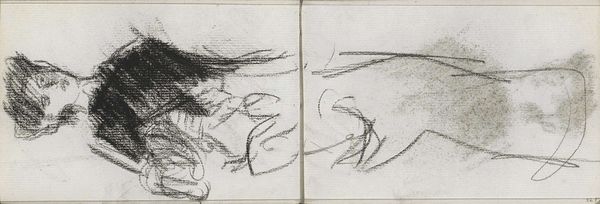
Copyright: Rijks Museum: Open Domain
Curator: Looking at this ink and pen drawing, simply titled "Groep vrouwen," or "Group of Women," by Isaac Israels, I immediately think of captured moments, like snatched glimpses from a busy street. There’s a sense of intimacy and immediacy. Editor: It strikes me as intentionally unfinished, raw even. There's a clear feminist energy in the way Israels focuses on representing these women as individuals without placing them in typical societal roles, especially for the time period of circa 1886-1903. Who were these women, and what were their lives like beyond the confines of traditional portraiture? Curator: Exactly! It’s as though we’re peeking into his sketchbook, witnessing the initial stages of a larger project. He captured something more than just appearances. His involvement with the Hague School also indicates a break from traditional academic art toward depicting everyday life, which includes women socializing and interacting. Editor: That’s important context. And look at the looseness of his lines. The quick, gestural strokes suggest a world of movement, rejecting formal constraint, and hinting at inner lives beyond conventional, patriarchal expectations. I wonder, was Israels deliberately making a political statement about the changing role of women at the time? Curator: Perhaps indirectly. It would be interesting to look into the social circles he frequented. His depictions definitely mirrored the shifting cultural landscape, especially for women and their place in a rapidly changing world. One has to consider the burgeoning women's rights movement at the time, with the need to express one's identity regardless of social standing. Editor: I agree. Israels, seemingly casually, places these women front and center. Curator: Considering this pen drawing as a kind of socio-historical snapshot adds depth to its interpretation, offering insights into artistic practices and the evolving roles of women in late 19th-century Netherlands. Editor: Precisely. It pushes me to question how artists like Israels participated in reflecting—or challenging—prevailing gender norms through seemingly simple acts of representation.
Comments
No comments
Be the first to comment and join the conversation on the ultimate creative platform.

